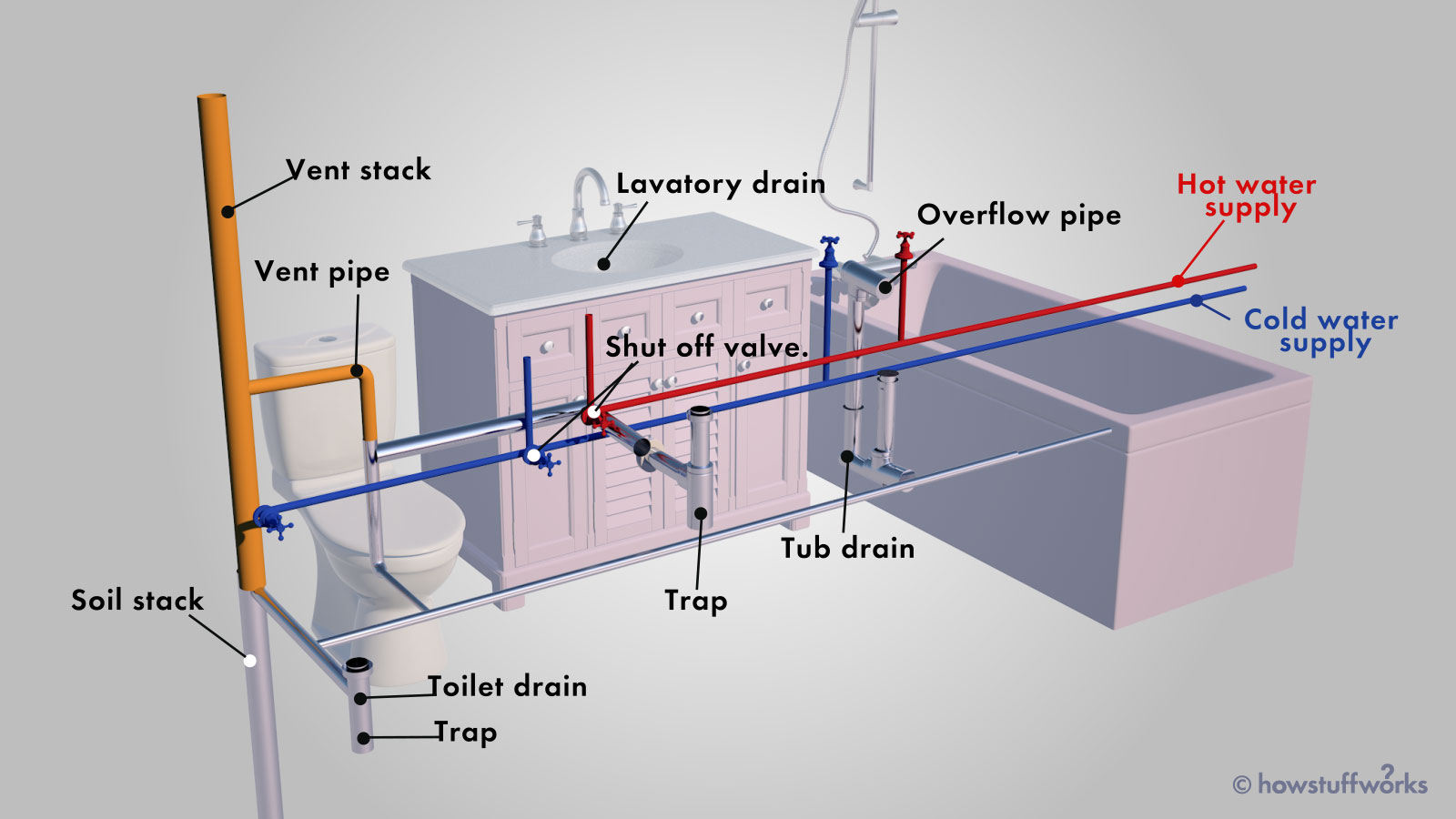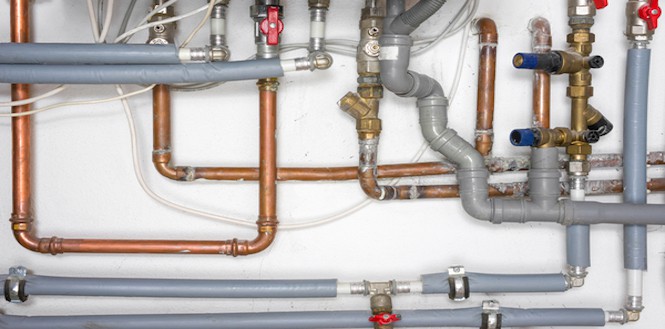How The Structure of Your House's Plumbing System Matters
How The Structure of Your House's Plumbing System Matters
Blog Article
What're your thoughts about Plumbing Installation 101: All You Need to Know?

Comprehending exactly how your home's pipes system functions is vital for every single house owner. From providing clean water for alcohol consumption, food preparation, and showering to securely eliminating wastewater, a well-kept pipes system is critical for your family members's health and wellness and comfort. In this detailed guide, we'll explore the intricate network that comprises your home's plumbing and offer suggestions on maintenance, upgrades, and handling common concerns.
Intro
Your home's pipes system is greater than just a network of pipes; it's an intricate system that guarantees you have access to clean water and reliable wastewater elimination. Recognizing its components and how they interact can assist you avoid pricey repair services and make sure everything runs smoothly.
Standard Parts of a Plumbing System
Pipelines and Tubes
At the heart of your plumbing system are the pipelines and tubing that bring water throughout your home. These can be made of different products such as copper, PVC, or PEX, each with its advantages in terms of resilience and cost-effectiveness.
Fixtures: Sinks, Toilets, Showers, and so on.
Components like sinks, bathrooms, showers, and tubs are where water is used in your home. Recognizing exactly how these fixtures connect to the pipes system aids in identifying problems and intending upgrades.
Shutoffs and Shut-off Points
Valves regulate the circulation of water in your plumbing system. Shut-off shutoffs are essential during emergency situations or when you require to make repair work, allowing you to separate parts of the system without interrupting water circulation to the whole house.
Water Supply System
Key Water Line
The primary water line connects your home to the metropolitan supply of water or a private well. It's where water enters your home and is distributed to numerous components.
Water Meter and Pressure Regulator
The water meter procedures your water use, while a pressure regulator makes sure that water moves at a safe pressure throughout your home's plumbing system, stopping damages to pipelines and components.
Cold Water vs. Warm water Lines
Understanding the distinction in between cold water lines, which provide water straight from the major, and warm water lines, which lug warmed water from the hot water heater, assists in fixing and preparing for upgrades.
Drain System
Drain Pipeline and Traps
Drain pipes carry wastewater away from sinks, showers, and bathrooms to the drain or septic tank. Traps protect against sewage system gases from entering your home and additionally catch debris that might cause blockages.
Air flow Pipelines
Air flow pipelines permit air right into the water drainage system, preventing suction that could slow drainage and cause traps to empty. Proper ventilation is important for maintaining the integrity of your pipes system.
Importance of Proper Water Drainage
Ensuring proper water drainage protects against back-ups and water damages. Consistently cleaning up drains and preserving traps can avoid costly repairs and extend the life of your pipes system.
Water Heating System
Types of Hot Water Heater
Hot water heater can be tankless or standard tank-style. Tankless heating units warm water on demand, while tanks store warmed water for prompt usage.
How Water Heaters Connect to the Pipes System
Recognizing how hot water heater attach to both the cold water supply and warm water distribution lines aids in identifying issues like inadequate hot water or leakages.
Maintenance Tips for Water Heaters
Consistently purging your water heater to eliminate sediment, checking the temperature settings, and inspecting for leaks can expand its life-span and boost power effectiveness.
Typical Plumbing Issues
Leaks and Their Causes
Leakages can take place as a result of maturing pipes, loose fittings, or high water stress. Resolving leakages immediately avoids water damages and mold development.
Blockages and Blockages
Obstructions in drains and commodes are commonly triggered by flushing non-flushable items or a build-up of oil and hair. Utilizing drain displays and bearing in mind what decreases your drains can protect against obstructions.
Indications of Plumbing Troubles to Expect
Low water pressure, slow-moving drains pipes, foul odors, or unusually high water bills are indicators of prospective plumbing issues that must be attended to promptly.
Pipes Upkeep Tips
Regular Examinations and Checks
Arrange annual pipes assessments to capture problems early. Look for indicators of leaks, corrosion, or mineral build-up in faucets and showerheads.
Do It Yourself Upkeep Tasks
Easy jobs like cleaning tap aerators, looking for toilet leakages using color tablets, or insulating subjected pipes in chilly climates can protect against major pipes problems.
When to Call an Expert Plumbing Professional
Know when a plumbing concern needs specialist competence. Attempting complicated repairs without correct knowledge can cause more damages and higher repair work prices.
Upgrading Your Pipes System
Reasons for Upgrading
Updating to water-efficient fixtures or changing old pipes can enhance water top quality, decrease water costs, and enhance the worth of your home.
Modern Pipes Technologies and Their Benefits
Discover technologies like clever leak detectors, water-saving toilets, and energy-efficient hot water heater that can save cash and decrease ecological effect.
Cost Factors To Consider and ROI
Calculate the ahead of time costs versus lasting savings when taking into consideration plumbing upgrades. Several upgrades pay for themselves via decreased energy expenses and less repair work.
Ecological Impact and Preservation
Water-Saving Fixtures and Devices
Installing low-flow taps, showerheads, and toilets can substantially lower water usage without giving up performance.
Tips for Minimizing Water Usage
Basic behaviors like repairing leakages quickly, taking much shorter showers, and running complete loads of washing and dishes can save water and reduced your utility expenses.
Eco-Friendly Pipes Options
Consider sustainable pipes materials like bamboo for flooring, which is durable and environment-friendly, or recycled glass for countertops.
Emergency Readiness
Actions to Take During a Plumbing Emergency situation
Know where your shut-off valves are located and exactly how to switch off the water supply in case of a burst pipe or significant leak.
Value of Having Emergency Situation Contacts Useful
Maintain call information for local plumbing technicians or emergency situation solutions conveniently available for quick reaction throughout a pipes situation.
DIY Emergency Fixes (When Appropriate).
Momentary solutions like using duct tape to patch a leaking pipeline or positioning a pail under a trickling faucet can minimize damage up until an expert plumbing technician gets here.
Verdict.
Understanding the anatomy of your home's plumbing system empowers you to preserve it efficiently, saving time and money on repairs. By following normal upkeep routines and staying informed concerning modern-day plumbing technologies, you can ensure your plumbing system runs successfully for several years to come.
HOW YOUR PLUMBING SYSTEM WORKS
Which Pipes Do What?
Blue lines = fresh water supply entering the building
Red lines = hot water supply entering the building
Grey lines = pipes carrying waste away from the building and venting pipes carrying gases away from the building (through the roof)
YOUR MAIN PLUMBING SYSTEMS
There are two main plumbing systems that support your home s basic plumbing needs one that brings clean water into your home, and one that sends dirty water away from your home. Connected to the toilet, bath, shower, and other faucets in your home, these two systems keep your water flowing in the right directions.
ACCESSING FRESH WATER
Fresh and clean water is brought into your home through the main water supply line . Filtered through one pipe, this water is pressured to flow into the various fixtures in your home at any given time.
This water can be sourced from a well located on your property, a pond or river (mostly cottages), or, as in most cases, from the city s municipal water treatment centre. However, it is important to note that water that is untreated, such as the water siphoned from ponds or rivers, may not be safe to drink. Personal water supplies always need to be treated for hardness and contaminants before consumed.
MUNICIPAL WATER SUPPLIES
Improve taste and odour
Remove sediment
Eliminate hardness
Reduce chlorine
COLD WATER SUPPLY VS. HOT WATER SUPPLY
Cold water flows into your home or building through the service line, which then distributes hot or cold water to your fixtures. This line is most commonly run through a central column that runs floor to floor. Hot water runs in short and straight pipes as the longer the pipeline, the more heat that will be lost in the transfer. Having shorter pipes also allows residents to access hot water more quickly.
WASTE WATER SYSTEM
Your wastewater system is divided into two parts pipes that send wastewater away from your home and venting pipes that send sewer gas away from your home. Sewage water travels through pipes that flush the water and waste towards local sewers that are operated and managed by your city or town. Most sewer systems rely on gravity to move the wastewater to where it needs to go.
The further away from your toilet or sink, the larger wastewater pipes become. This allows for waste to be disposed of from various parts of your home or business at once without pipe blockages. The angle and flow of these pipes are also essential for keeping your waste pipes clear of build up.
https://harrisplumbing.ca/how-your-home-plumbing-system-works/

HOW YOUR PLUMBING SYSTEM WORKS
Which Pipes Do What?
YOUR MAIN PLUMBING SYSTEMS
There are two main plumbing systems that support your home s basic plumbing needs one that brings clean water into your home, and one that sends dirty water away from your home. Connected to the toilet, bath, shower, and other faucets in your home, these two systems keep your water flowing in the right directions.
ACCESSING FRESH WATER
Fresh and clean water is brought into your home through the main water supply line . Filtered through one pipe, this water is pressured to flow into the various fixtures in your home at any given time.
This water can be sourced from a well located on your property, a pond or river (mostly cottages), or, as in most cases, from the city s municipal water treatment centre. However, it is important to note that water that is untreated, such as the water siphoned from ponds or rivers, may not be safe to drink. Personal water supplies always need to be treated for hardness and contaminants before consumed.
MUNICIPAL WATER SUPPLIES
COLD WATER SUPPLY VS. HOT WATER SUPPLY
Cold water flows into your home or building through the service line, which then distributes hot or cold water to your fixtures. This line is most commonly run through a central column that runs floor to floor. Hot water runs in short and straight pipes as the longer the pipeline, the more heat that will be lost in the transfer. Having shorter pipes also allows residents to access hot water more quickly.
WASTE WATER SYSTEM
Your wastewater system is divided into two parts pipes that send wastewater away from your home and venting pipes that send sewer gas away from your home. Sewage water travels through pipes that flush the water and waste towards local sewers that are operated and managed by your city or town. Most sewer systems rely on gravity to move the wastewater to where it needs to go.
The further away from your toilet or sink, the larger wastewater pipes become. This allows for waste to be disposed of from various parts of your home or business at once without pipe blockages. The angle and flow of these pipes are also essential for keeping your waste pipes clear of build up.
https://harrisplumbing.ca/how-your-home-plumbing-system-works/
Hopefully you enjoyed reading our piece about Exploring Your Homes Plumbing Anatomy. Thanks so much for taking time to read through our blog. So long as you appreciated our article plz do not forget to share it. I treasure your readership.
Browse Our Site Report this page